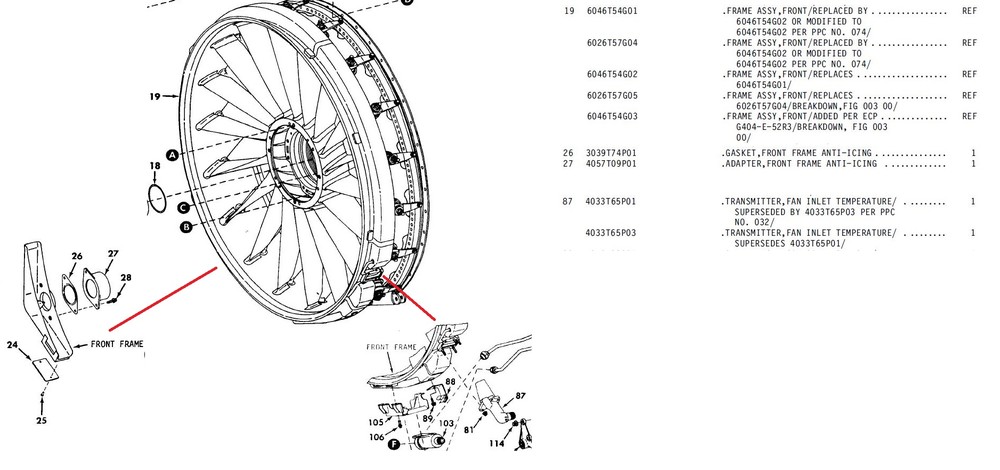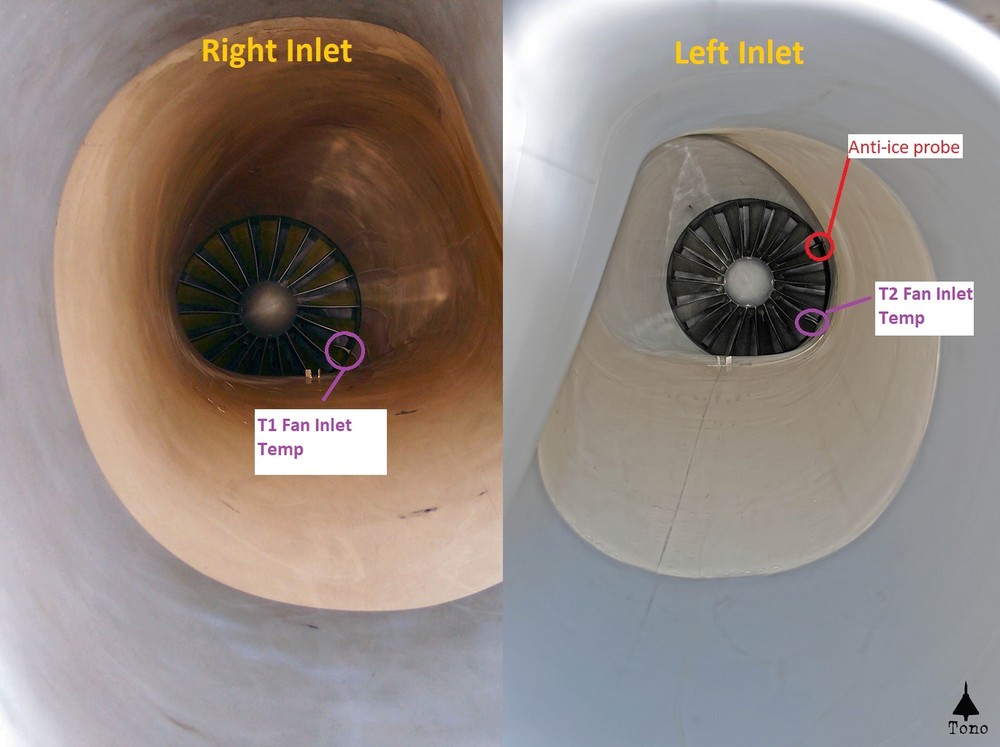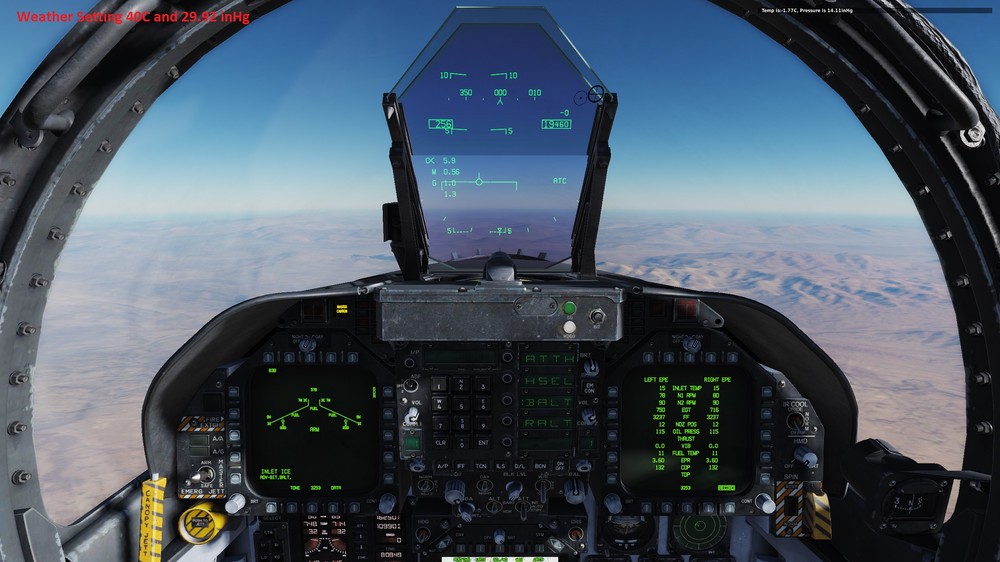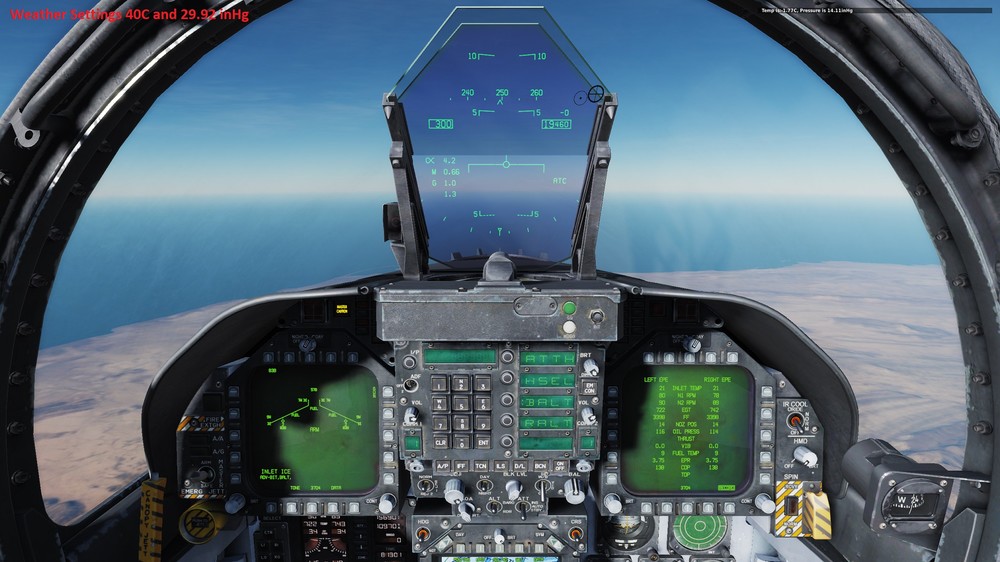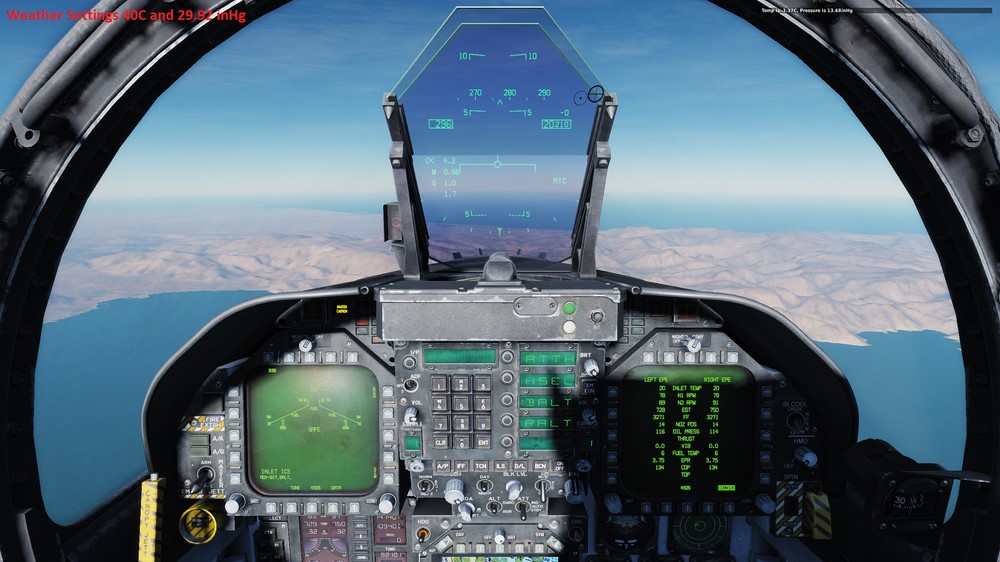

Knives
Members-
Posts
157 -
Joined
-
Last visited
Content Type
Profiles
Forums
Events
Everything posted by Knives
-
It is all related to resolution and FOV (Zoom). Do this test: Have a plane in WVR front of you, let say 5nm. When you decrease your FOV (zooming in) that plane get smaller. But, when you increase your FOV (zooming out) that plane get larger. The model Enlargement is their in Dcs, but it is related to FOV.
-
OK. After doing some research and studies, I came across some valuable information I would like to share them with you. As you know we discussed the ICE INLET Warning in depth. But, since most of us are not expert in the F-18 systems, some of us were expressing their thought and opinions that could be right or wrong (including my self). So I gathered some information and studied them to leave no doubt on how the system is working. The Inlet Ice detector is located in the left engine inlet (intake) only (As per manual and photos), and preceding the engine Fan Inlet lip a few centimeters (2 o'clock). The Inlet Ice detector is not part of the engine (unlike the Fan Inlet Temp sensor), and is not used in the Engine Operation. The above quote is from the Ice detector manufacturer. and it is explaining the detector operation for a late F/A-18E/F variants. But, the same concept is used for ice detector in the F/A-18AD, and also they were the supplier. The Fan Inlet Temp (T1) is located at the Fan Inlet (4 o'clock angle) and it is a part of engine Fan Module (Installed by GE). But, it is used only as monitoring sensor, unlike the Compressor Inlet Temp Sensor (T2.5 CIT) which is used for Fuel Control System. Its worth to mention, Temp Sensors are called Transmitters and not sensor in the manuals. The Engine Anti Ice Switch when ON, Hot Air from (Stage 4) Goes inside the front Fan Inlet frame (No. 19) to provide Anti Icing for the Fan Inlet. But does not affect the Fan Inlet Temp sensor or the Inlet Ice Detector. Which means as long as icing conditions are present, the INLET ICE caution shall remain ON. On the other hand, from how the Ice Detector works as described earlier. INLET ICE may switch OFF (When Ice Detector prob heating is on) at the beginning of next Ice Accretion Detection Cycle (No Ice). and switch back ON when Ice accumulated again. DCS has modeled or scripted the Ice detector operation (Cycling) correctly. But to trigger INLET ICE caution whenever the OAT temp is below Zero is completely wrong. As icing conditions may not be present. Another fact. The F/A-18 has an Air Data Computer. and several sensors on the front fuselage. But some of the Air or Ambient properties are calculated by the Air Data Computer as the following diagram (Even Humidity). But I don't know if there is a page on the DDI to show these values.
-
I keep thinking about this graph specially the top left note which is saying "Too Cold (Ambient Temp below - 30C)" Does it mean that icing conditions and danger zone is expected only if the Ambient Temp is at or below -30C?
-
The INLET ICE caution comes on and off even if corrective actions were not take. Because, This from Manufacturer
-
I'm mistaken indeed. The Anti Ice Probe is the lower one at 4 o'clock, the upper one at 2 is the Inlet temp sensor. No visual of the Inlet Ice sensor. Here is the prob connected to Eng Anti Valve.
-
From the photo. They are at the distance from the inlet lip but at different angles. Moreover, and if I'm not mistaken, the Eng Anti Ice vent is at 11 o'clock.
-
Ambient Temp ties them all. Icing conditions (INLET ICE) = Ambient Temp + Other Parameters ☓ Factors INLET TEMP = Ambient Temp + Aerodynamic Heat of Inlet. Were Aerodynamic Heat of Inlet = Mach Speed ☓ Factor.
-
Knowledge is like money: to be of value it must circulate,and in circulating it can increase in quantity and, hopefully, in value. - Louis L’Amour
-
Thank a lot for the photos, they are self explanatory. In the tests I did explained in this post: https://forums.eagle.ru/showthread.php?p=3560450 I get the INLET ICE caution whenever the atmospheric temp at my current altitude and position is below 0°C. Regardless of my speed and humidity if it is simulated. You can see the atmospheric temp at the top right corner in the attached photo in mentioned post. You can also try the attached mission file which has a script that print the atmospheric temp at your current point in space. (in Others radio item).
-
Anti ice was off. But, I repeated the same with Eng Anti Ice on. I got the same results.
-
No, you would notice a difference in Exhaust Gas Temp (EGT).
-
From my test switching on Eng Anti Ice has no effect whatsoever. How I tell. Because Eng Anti Ice draws hot air (I think from stage 4) and inject it in the inlet. If it is implemented you will notice a raise in EGT. But currently it has no effect on EGT so I guess it is not implemented.
-
I did some tests. 1st one clear skies with 30C and 29.92inHg and the 2nd test with 40C on different altitudes. 15,000 to 20,000 MSL. I found that whenever the atmospheric temp goes below zero. The INLET ICE warning comes on after some time. Maybe the logic for detecting icing conditions in current DCS depends only on atmospheric temp at the current position. INLET TEMP depends on M speed and atmospheric temp. I checked for atmospheric temp by adding a radio item which runs a script and print out the temp and pressure at my current point in space. Ambient temp and pressure at the current point in space at right top corner. Weather settings are in left top corner. mission file is included if anybody care to do some tests. F-18 - INLET ICE - 40.miz
-
Exactly. Answers to these question will help a lot. But my experience with Ka-50 and icing conditions without switching on Anti-Ice resulted in engines shutdown mid flight.
-
The INLET ICE caution is designed to come on when 0.025 inch of ice has accumulated on the inlet ice detector, located in the left inlet. So, there is ice on the sensor. But, the danger is as little as 0.5 inch of ice ingested by the engine from the inlet lip can result in compressor stalls and major FOD. Regardless of what is INLET TEMP (it is not a measurement of OAT). The recommendation as follow from NATOPS: ============== 20.1.2 In Flight 1. ENG ANTI ICE switch -ON 2. PITOT ANTI ICE switch -ON 3. Adjust airspeed to provide at least +5°C (+10°C preferred) INLET TEMP on the DDI engine display. If INLET TEMP of at least +5°C not possible 4. Climb or descend out of icing danger zone (see figure 20-1). Monitor INLET TEMP and Mach. If time and fuel permit, climb to a safe altitude. Altitudes above about 25,000 feet or ambient temperatures below -30°C will generally prevent icing since the water droplets are frozen and will not adhere. Descend only if you are sure that ambient temperature is well above freezing at a safe altitude below. ============== The reason behind (INLET TEMP of at least +5°C) is "With no ice visible on the aircraft, an INLET TEMP of at least +5°C should provide sufficient aerodynamic heating to prevent ice accumulation on the LEFs and inlet lips." in short (heat due friction) Also read the right side note on the graph But if ice is visible. An extra limitations for AoA, throttles, bank angels and maneuvers just to prevent ice from detaching from the inlet lip and being ingested by the engines. It is clear in the manual, but we are not discussing physics. We are discussing the logic behind DCS that trigger INLET ICE caution even at low altitudes and warm temperatures, if it is correct or not or WIP.
-

Warning Caption After Deselecting Hornet Autopilot.
Knives replied to Tinkickef's topic in Bugs and Problems
As per NATOPS. The "Auto Pilot" message means uncommanded disengage. And you can clear it by pressing the paddle switch. But doing so, does not clear it. The only exception if you are on ground. -

[MISSING TRACK FILE] unable to select any weapons
Knives replied to specterStudios's topic in Bugs and Problems
Track file is definitely required. (ED Rules) But anyway, when I shutdown the aircraft I always Cycle Both MC 1&2 (Mission Computers) to Off then Norm. Doing so helped a lot in similar situation as you. MC 1 for FCS, AFCS (Autopilot) and support systems. MC 2 for weaponry stuff. I don't say or assume you have these warnings. But anyway you can try cycling MC and see if it is helping. -
It is a known fact that the higher you go the lower atmospheric temperature you will get. Because what is really heating the air or atmosphere is the earth/ground and not directly by the sun. The fuel temp is way colder because the fuel is volatile and the system is pressurized plus the effect of the OAT. At high altitude even in Nevada the fuel temp could be -20°C or even lower. (high altitude means 30,000ft MSL and above) But the problem with DCS even as low as 8000ft MSL (5000ft AGL) the INLET ICE Warning comes on. So most of the people here think it is a bug. On the other hand, whatever people here were arguing or telling and you too sir was very informative. I think someone from ED has to jump in to either confirm it as a bug or refuse it with an explanation to better understand the Hornet System Operation Procedures.
-
Ground crew safety. https://youtu.be/TzEOCazEwPw
-
I always watch the following video before jumping in the cockpit. I don't why, but since I started watching it before any mission, my performance got better. What does motivate you? Sent from my H8266 using Tapatalk
-

Did TACAN logic get changed again? Nothing from the Stennis
Knives replied to Nealius's topic in Mission Editor
Maybe. I didn't test it with multiple units in a group with different TCN. But now you have to select a unit in the TCN action. Because it happened with me as OP. I checked and found I didn't select a unit. Sent from my H8266 using Tapatalk -
From NATOPS. Page 85. 2.2.4.1 External Tank Fuel Control Switches. Two EXT TANKS fuel control switches, labeled WING (for external wing tanks) and CTR (for centerline tank), are on the FUEL panel. NORM: With the external tank(s) pressurized, external fuel transfers to any internal tank that accepts it. STOP: With the external tank(s) pressurized, external fuel does not transfer until FUEL LO caution display is on. ORIDE: Pressurization of and fuel transfer from all installed external tanks is provided (HOOK handle must be up in F/A-18A/B aircraft). The other external tank fuel control switch must be in STOP if fuel transfer from its tank(s) is not desired. Basically what you are doing is Pressurize external fuel tanks and sending fuel to internal tanks while they are full. Guess what will happen to extra fuel? It will be dumped in the engine. Keep it at NORM positions and the regulator will control the fuel transfer to the internal tanks by the amount consumed by the engines. What I do if I have 3 Tanks I stop the CNTR Tank as soon as I'm airporn. After I consume all the fuel in wings tank I set the CNTR tank to NORM and drop the wings tanks, to improve the aerodynamics. Sent from my H8266 using Tapatalk
-
I think wheel chocks should be removed before starting the engines. Also, if launch bar is lowered it will trap the front wheel chock beneath it. Sent from my H8266 using Tapatalk
-

Did TACAN logic get changed again? Nothing from the Stennis
Knives replied to Nealius's topic in Mission Editor
In the advanced waypoint action set a command to enable TACAN. In the TACAN setting select the unit which I usually name it to Stennis. Now multiple units in a group can have thier own TACAN ID and code. Sent from my H8266 using Tapatalk


